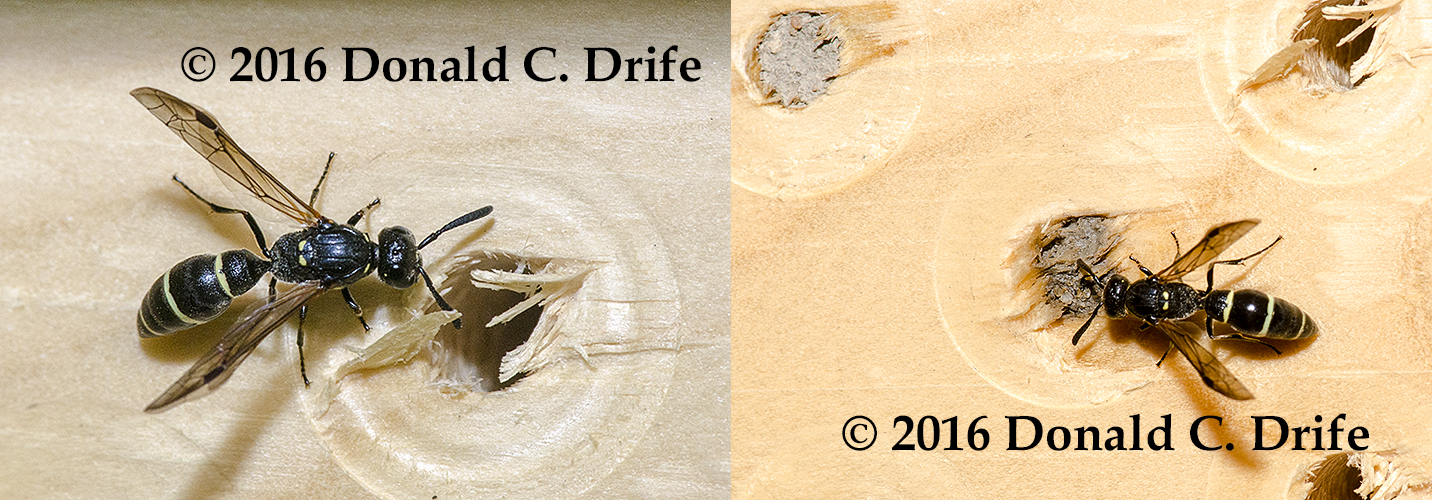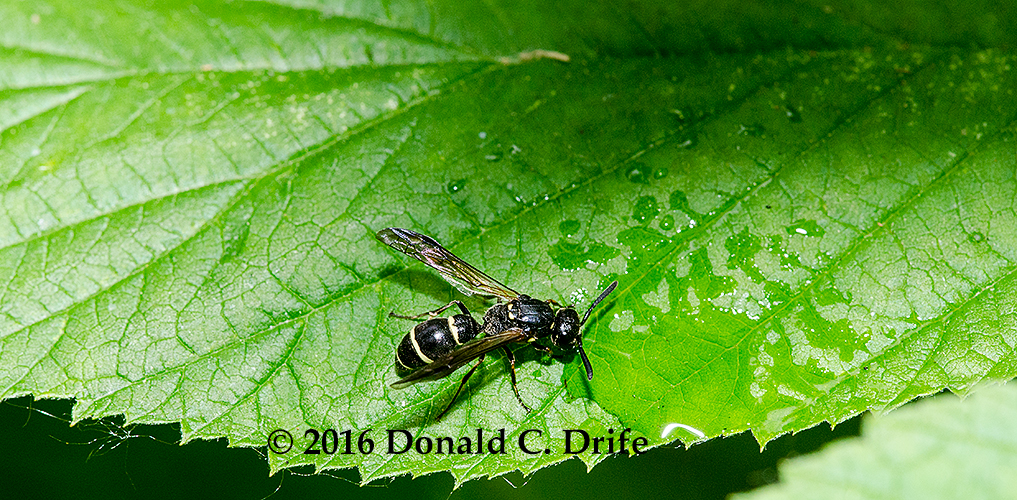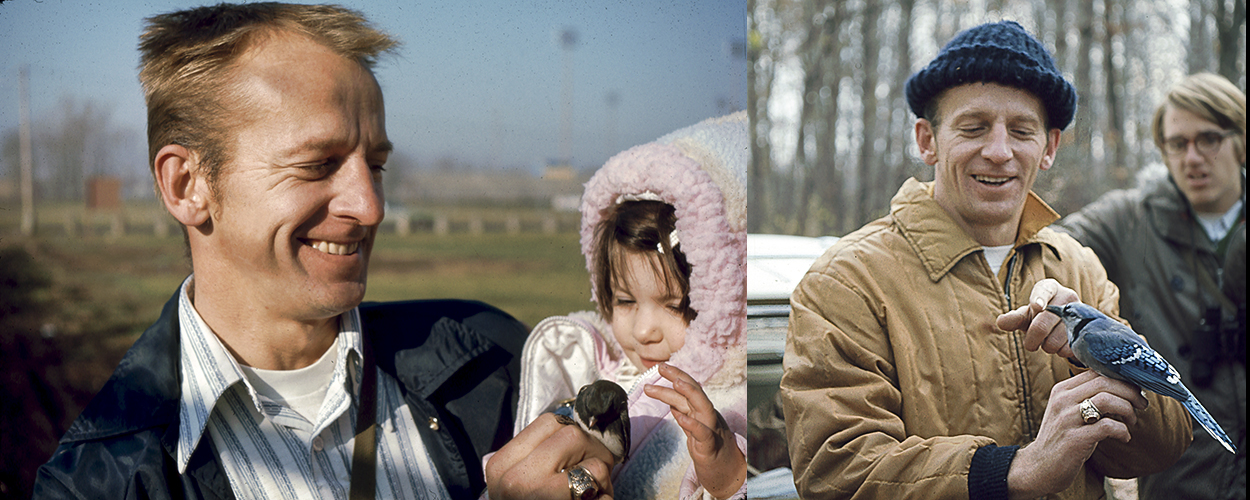
Bob Gasiorowski leading Nature Walks 1975
Royal Oak’s nature community lost a good friend last month with the passing of Robert (Bob) Gasiorowski. I met Bob in the summer of 1972 when a notice appeared in the Royal Oak Daily Tribune announcing a series of morning hikes in Quickstad Park. Bob served as the city naturalist and led the hikes. Each session began with a lecture by Bob in his classroom in Kimball High School and then we would head to Quickstad for a nature walk. Topics included: pond life, insects, birds, trees, wildflowers, mammals, and more. Bob shared his infectious passion for all facets of the natural world. The nature program ran for several years, adding summer evening walks and an evening lecture program. I made my first public speaking presentation, with much encouragement and coaching from Bob, to this group.
Tenhave Woods in Quickstad Park still exists because Bob fought for its preservation. The city was under pressure to remove the undergrowth and thin the trees so the park would become “safer”. Bob and John Lindell, the director of Royal Oak Parks and Recreation, protected these marvelous woods from destruction. As a compromise Tenhave Woods was fenced.
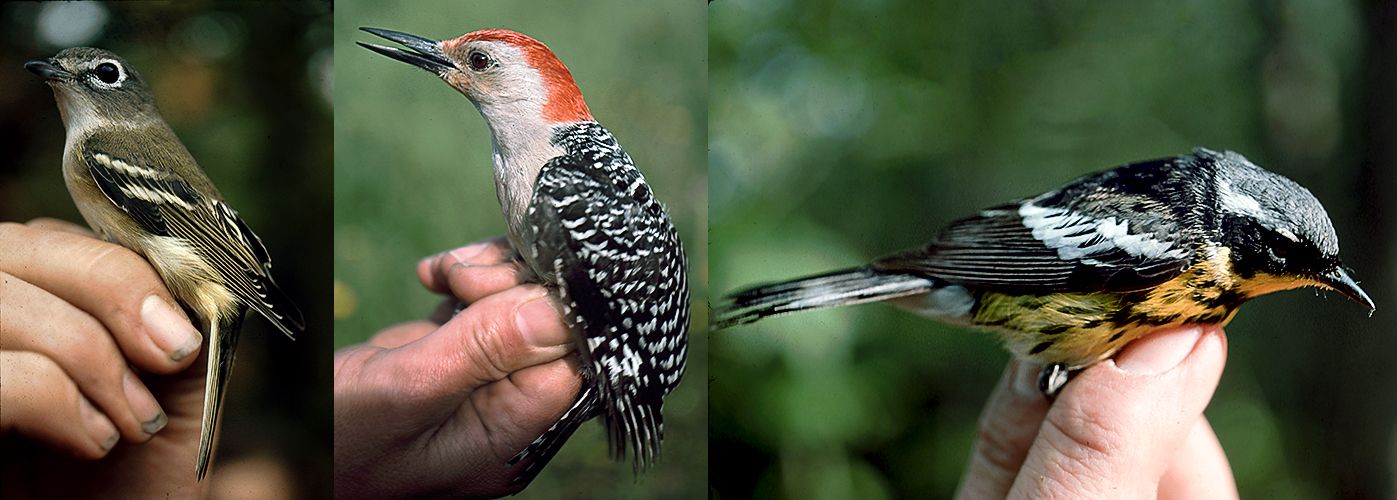
Blue-headed Vireo, Red-bellied Woodpecker, and Magnolia Warbler in hand during bird banding work in the 1970s.
Bob’s data from the 1970s provides a baseline for us to measure the health of the woodlot. We have several decades of his bird banding records. These form the base of our bird list. As part of a 1971 NSF Summer Institute for teachers at U of M Dearborn, he identified and measured hundreds of trees in Tenhave Woods. This quantitative analysis allows us to measure the changes in tree species composition. Under Bob’s direction, the first vascular plant list for the park was compiled.
Naturalists of Bob’s caliber are rare. Most people specialize in one facet of natural history. They study birds, or plants, or insects. Bob studied everything. I’m lucky to have had many people who instructed me about the natural world. Bob taught me to diligently observe nature. To measure and record the world around me. Get out a stopwatch and time how many calls a minute a Robin makes. Measure the size of that tree or flower. Use a thermometer and discover the difference in temperatures between the sunny and shady sides of a rock. Quantify Nature but never lose the wonder of Nature. Do not overlook the beauty of a spring woods in full bloom or the music of a wren’s song. He taught me to put Nature into the hands of children. Share with them the wonder. Bob was happiest when he was teaching and especially loved to teach young children. He told me, “If a child sees a bird through binoculars then they probably will not look at one through a B-B gun sight.”
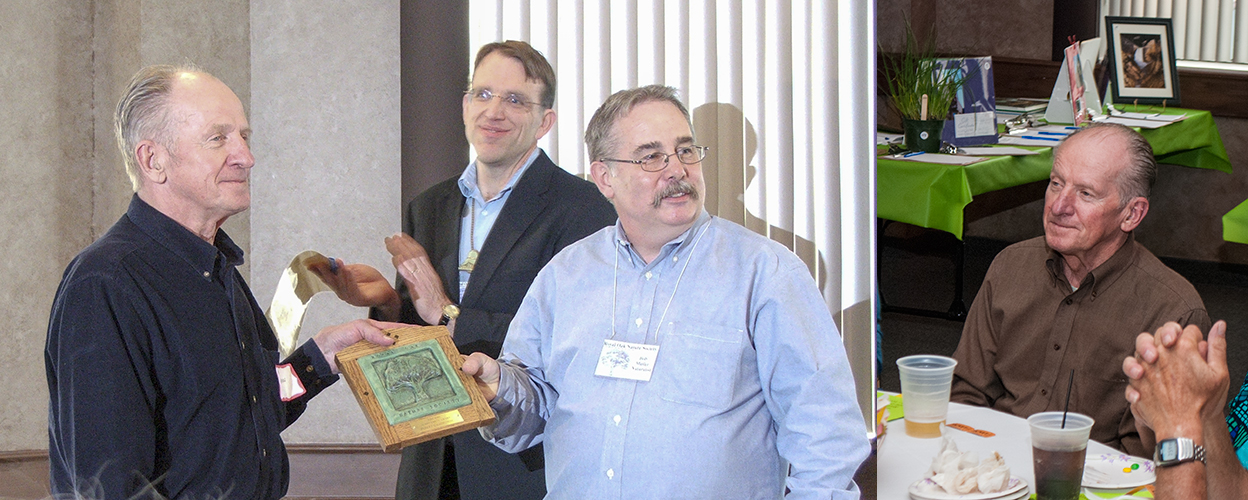
Bob Gasiorowski receiving the first “Robert Gasiorowski Lifetime Achievement Award” in 2007, presented by Don Drife and Bob Muller, and watching in 2008 as the award is given to another recipient.
The Royal Oak Nature Society would not exist without Bob’s program as an example. It is fitting that their highest honor is named the “Robert Gasiorowski Lifetime Achievement Award” and that he was the first recipient. Bob spent a lifetime learning and then teaching about Nature. I will miss him.
Thanks to Robert Muller for providing photos from the 1970s.
Copyright 2016 by Donald Drife
Webpage Michigan Nature Guy
Follow MichiganNatureGuy on Facebook


